Bark Mantid Tarachodes (Tarachodes) sanctus
Superfamily Eremiaphiloidea. Family Eremiaphilidae. Subfamily Tarachodinae. Tribe Tarachodini
Female with ootheca, Garden in Pretoria, Gauteng (16 Dec 2020) © Caju

© BluTuna
Female. Kruger National Park
The habit of holding the forelegs bent aside and the dorsal edges of the femora pressed against the lateral edges of the pronotum can be found in many bark dwelling Mantodea. This behaviour helps to conceal the typical 'praying' outline and to avoid lateral shadows. The close fitting of the dorsal fore femora against the prothorax plays an important role in camouflage. When pressed against the surface, usually a branch, or the bark of a tree, the dorsal edges of the fore femora perfectly merge with the ventral lateral edges of the pronotum when the fore legs are folded.
In general, Tarachodinae may be identified by having slightly flattened habitus, flattened cerci and shortened meso- and metathoracic legs. The head is comparatively large with respect to the often slender body. The males are mostly fully winged, while the females are often brachypterous.
Tarachodes mantids are cryptic brown and dorso-ventrally flattened to closely resemble bark and lichens. They spend much time resting motionless on tree trunks with the head flexed (with mouthparts directed backward), so that in side view the contour line of tree to head is imperceptible.
Adult females have reduced wings and the abdomens of the females and nymphs are corrugated, resembling the texture of bark.
Wings of the males are gray, reticulated, with dark blotches.
Several species exhibit maternal care; females guard the ootheca (egg case) until the nymphs emerge.
Tarachodes sanctus is 30,0 - 47,0 mm in length and the female has a pair of conical humps on the pronotum, lateral margins of the pronotum toothed.
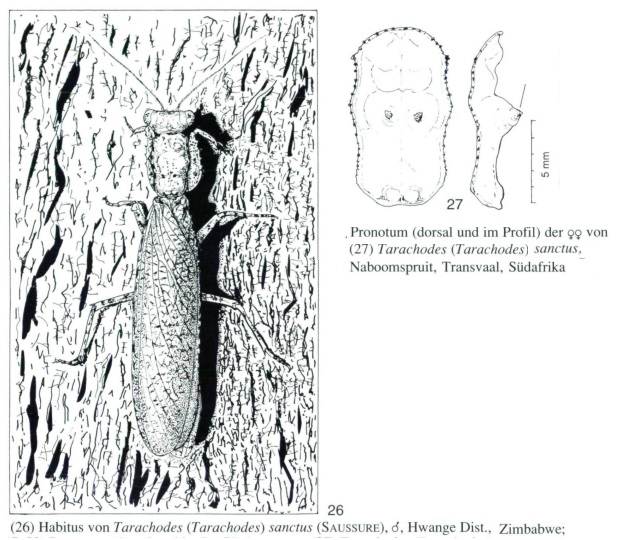
- T sanctus Kaltenbach.jpg (135.84 KiB) Viewed 2042 times
Distribution
South Africa (KwaZulu-Natal, Mpumalanga, Gauteng, Northern Province, Northwestern Province and Northern Cape), Mozambique, Zimbabwe, Zambia DR Congo, Rwanda.
Mantis Facts: Ootheca
The ootheca, or egg case, is a complex structure female praying mantises form during oviposition to provide support and protection to eggs from environmental conditions and natural enemies. The ootheca itself is formed from the frothy secretions of the accessory glands of the female genital complex, which gradually harden upon mixing. Unlike other dictyopterans, mantodean oothecae are remarkable for exhibiting extensive architectural and cryptic variation, as well as variation in the mechanical properties of its constituent elements, mostly protein and calcium-based compounds.
Links:
https://specimens.mantodearesearch.com/specimens/1133
https://www.zobodat.at/pdf/ANNA_100B_0019-0059.pdf
http://mantodea.speciesfile.org/Common/ ... ID=1185422
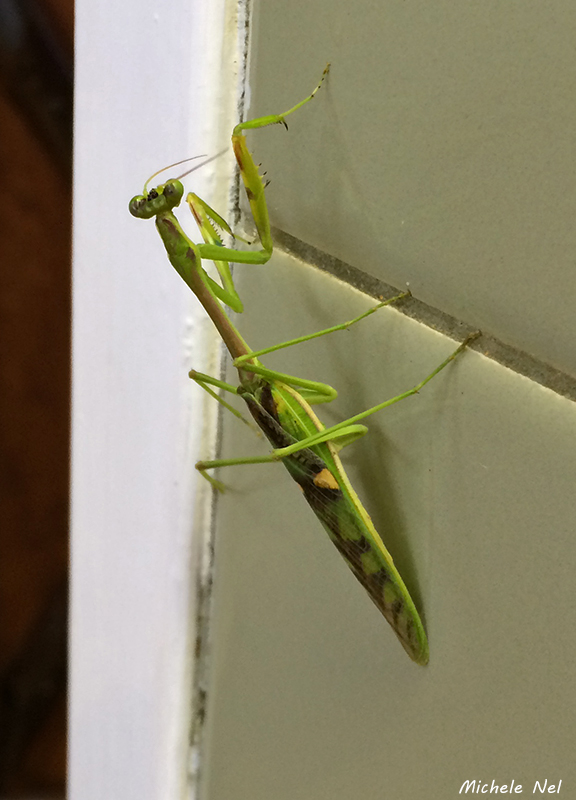 © Michele Nel
© Michele Nel © BluTuna
© BluTuna


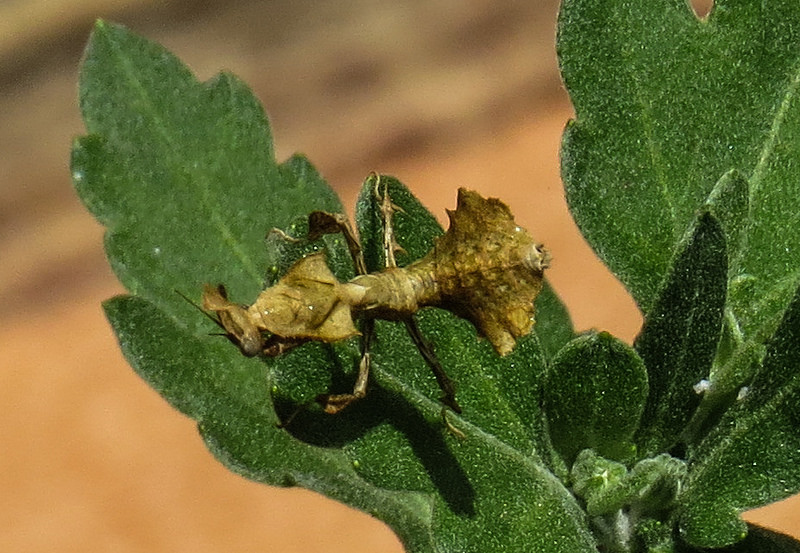 © steamtrainfan
© steamtrainfan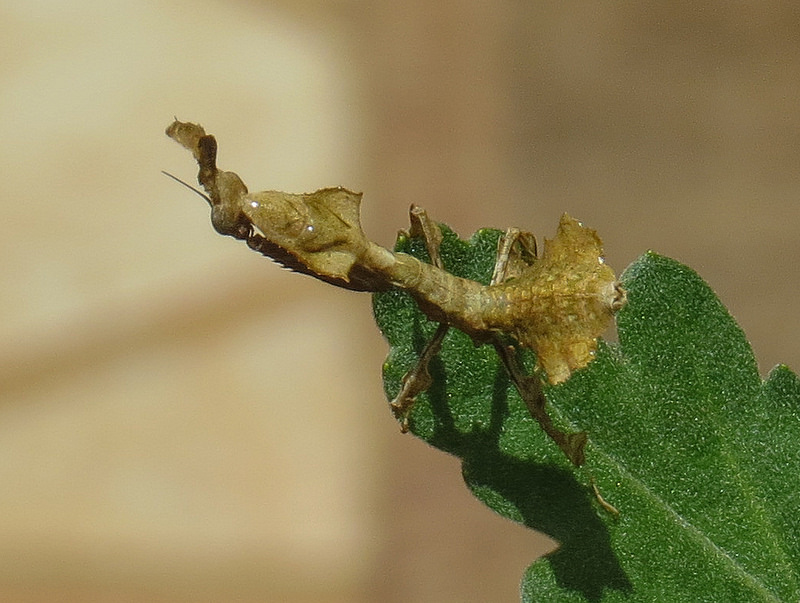 © steamtrainfan
© steamtrainfan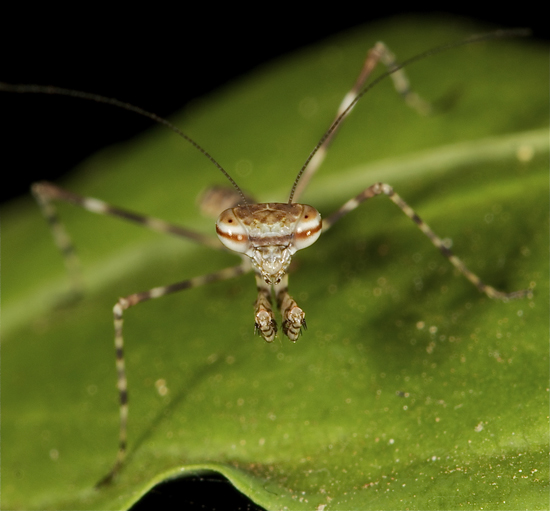
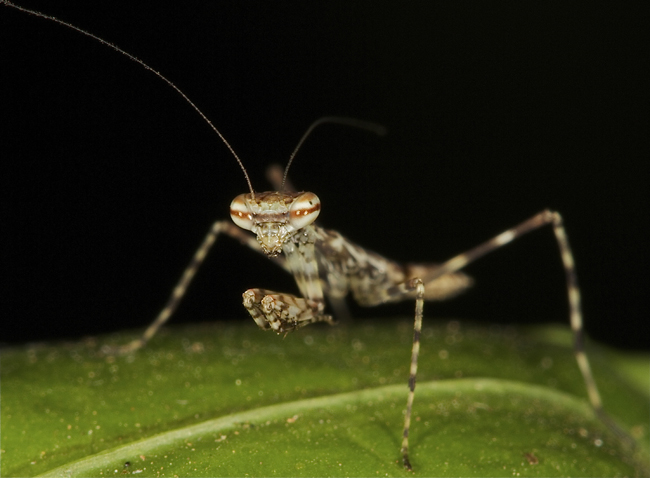
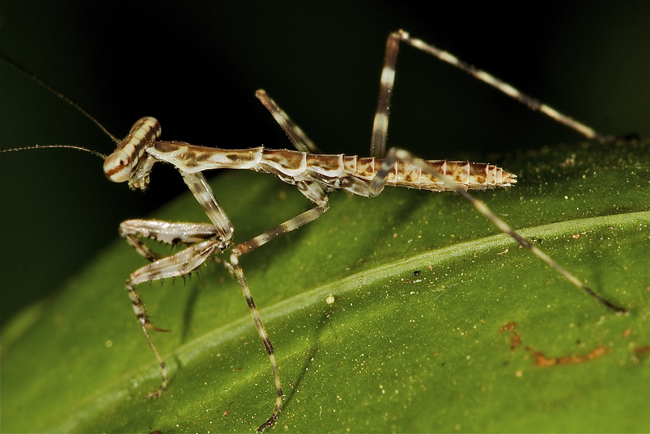
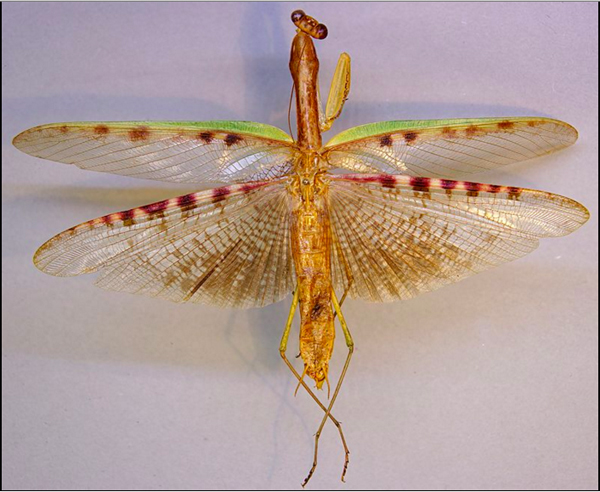
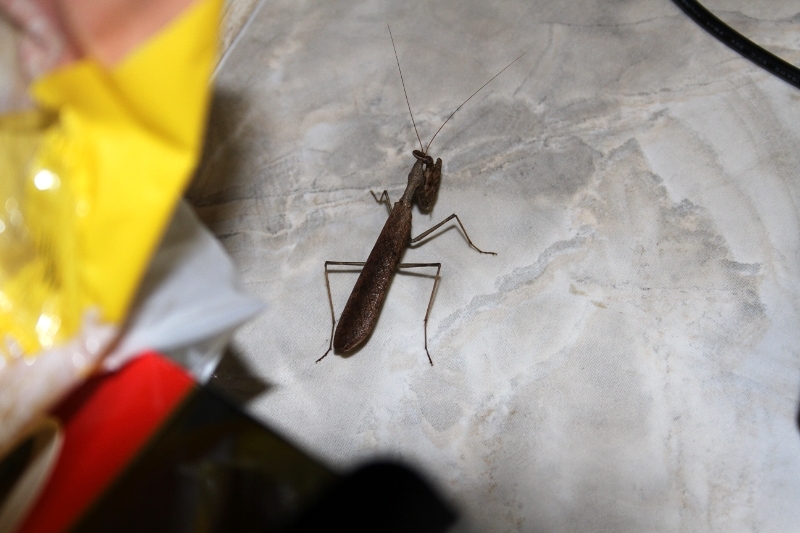
 © nan
© nan © nan
© nan © nan
© nan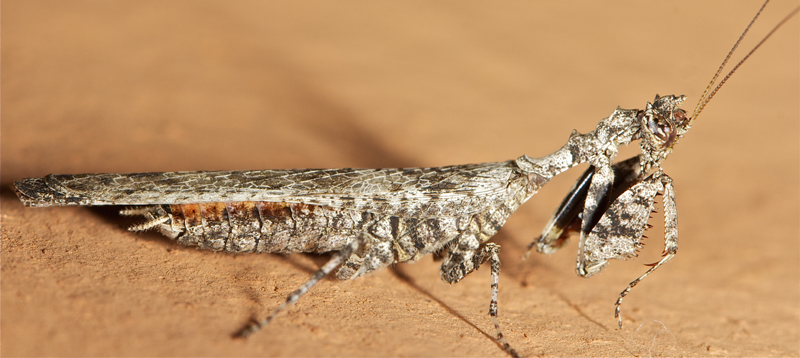
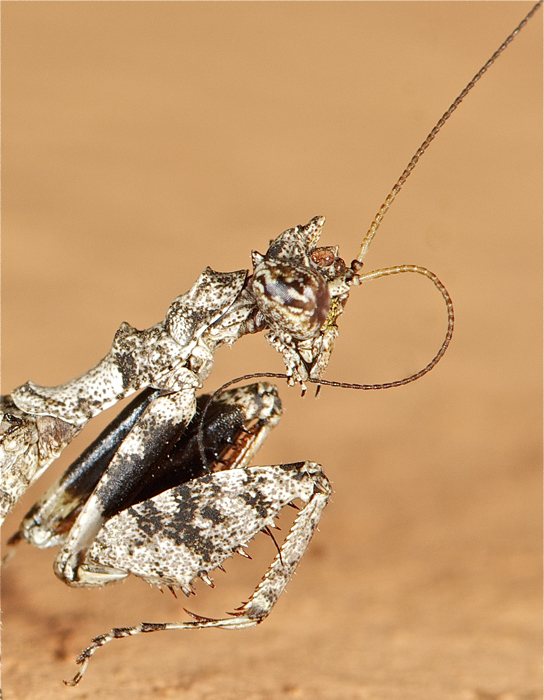
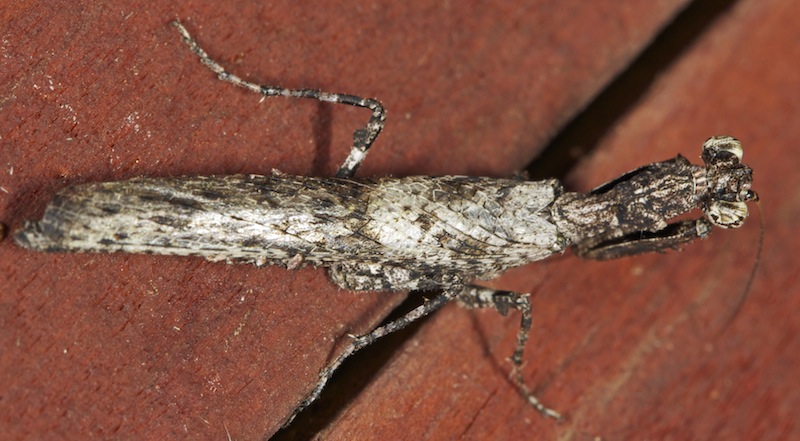 © ExFmem
© ExFmem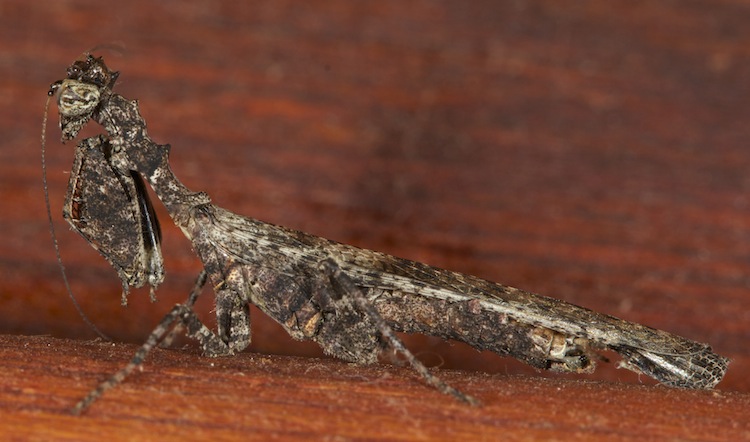 © ExFmem
© ExFmem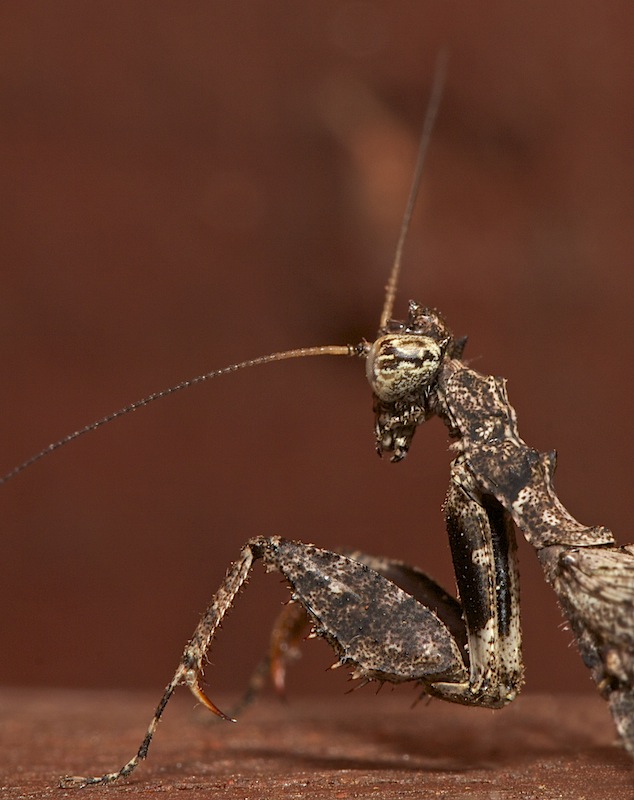 © ExFmem
© ExFmem © BluTuna
© BluTuna